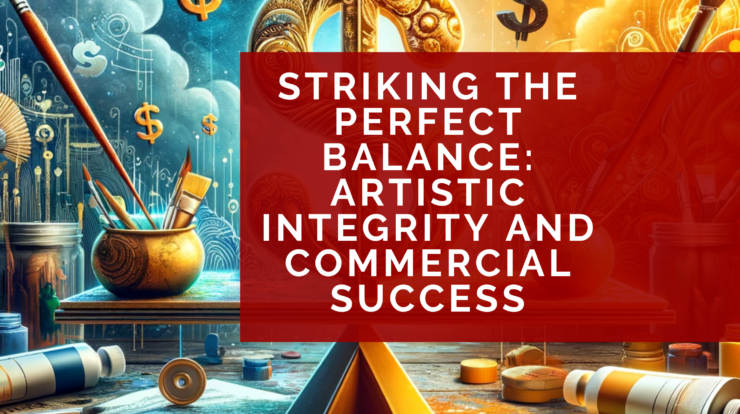
In the dynamic world of art, artists often find themselves at a crossroads between staying true to their artistic vision and seeking commercial success. Through my experience in the art world, I’ve observed that the key to long-term success and personal fulfillment lies in finding a harmonious balance between these two aspects. Let’s explore how this balance can be achieved.
Understanding the Dilemma: The core of an artist’s journey is about authentic self-expression. However, the practical aspects of the art market require a level of adaptability. The real challenge lies in creating art that is both true to your vision and appealing to a wider audience.
The Power of Artistic Integrity: Artistic integrity is your most valuable asset. It’s about presenting something fresh and genuine to the world. When you create from a place of passion, your work vibrates with authenticity, making it more appealing to collectors and art enthusiasts. In my experience, artists who steadfastly pursue their vision are the ones who enjoy enduring success.
Navigating Commercial Success: Commercial success doesn’t necessitate sacrificing your artistic values. It’s about understanding the market and identifying your place within it. This might involve exploring different styles or themes that align with your artistic ethos while also resonating with your audience. Successful artists often find that establishing a distinct style allows them to adapt within that framework to reach a broader market.
Embracing Your Unique Journey: Each artist’s journey is unique. It’s crucial not to compare your path to others. I’ve found that the happiest artists are those comfortable with their own level of success. They don’t measure their achievements against others and aren’t swayed by others’ successes. This mindset is vital for maintaining focus on your personal artistic journey.
Persistence and Patience: Persistence is key in the art world. Experiment with different approaches and be open to feedback. This process of trial and error is crucial for growth. However, ensure that market trends inform rather than dictate your creative process. Your best work will always be the work that’s most true to yourself.
Conclusion: Balancing artistic integrity with commercial success is not about compromise; it’s about finding a sweet spot where both can coexist. Trust in your artistic voice, understand your market, and let your passion and persistence guide you. Remember, the most fulfilling and successful artistic career is one where you stay true to your vision and celebrate your unique journey.
Join the Conversation: As we wrap up this exploration of balancing artistic integrity with commercial success, I’d love to hear from you. Every artist’s journey is rich with unique experiences and insights. How do you navigate this balance in your own artistic career? Have you found certain strategies particularly effective, or are there challenges you’re currently facing? Please share your thoughts and experiences in the comments below.
So many good points in this blog post. I would put ‘The Power of Artistic Integrity’ as probably the one that stands out to me. Without passion and uniqueness, I might as well be punching a timecard.
This is a great blog! I think many artists struggle to stay true to their own style when trying to achieve commercial success. We each have our own language to express ourselves visually, & personally, I believe that it doesn’t work to step too far afield from that.
Well said! Thank you for your guidance and support.
The strategy I use is to make a lot of art freely, in ways I enjoy making it. Afterwards I’m able to be selective about the pieces I present, looking for the links and consistencies and matching selections to the contexts they’ll be shown in.